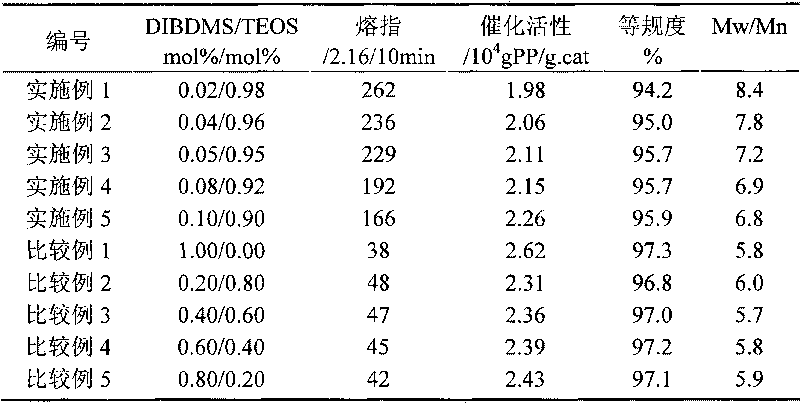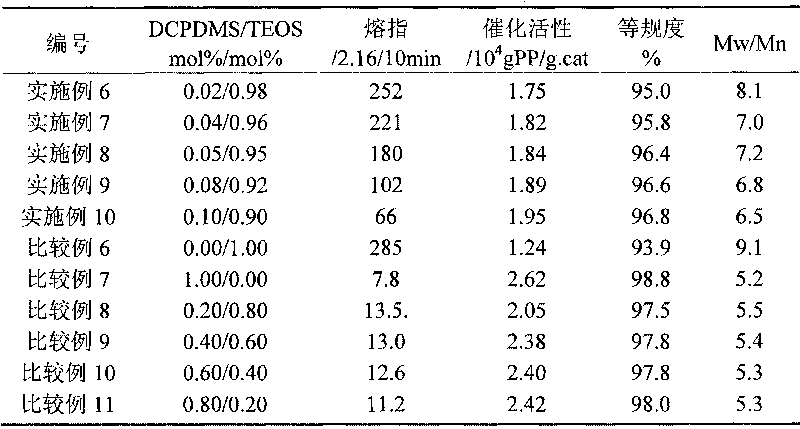Method for preparing high-fluidity wide-distribution polypropylene and product thereof
A polypropylene and wide-distribution technology, applied in the field of high-flow and wide-distribution polypropylene, can solve the problems of troublesome and inconvenient feeding of electrons, and can not be used to prepare high-flow and wide-distribution, etc., to achieve excellent mechanical properties, high flow, wide spread effect
- Summary
- Abstract
- Description
- Claims
- Application Information
AI Technical Summary
Problems solved by technology
Method used
Image
Examples
Embodiment 1
[0042] According to the aforementioned polymerization experiment, the selected component C is a compound system of TEOS and DIBDMS, and the compound ratio of the two is M(DIBDMS) / [M(TEOS)+M(DIBDMS)]=2%. The Al / Si / Ti ratio of the active components of components A, B, and C is 100:10:1, and the polymerization results are shown in Table 1.
Embodiment 2
[0044] The same implementation process as in implementation 1, except that the compounding ratio of TEOS and DIBDMS is adjusted to M(DIBDMS) / [M(TEOS)+M(DIBDMS)]=4%. The aggregation results are shown in Table 1.
Embodiment 3
[0046] The same implementation process as in implementation 1, except that the compounding ratio of TEOS and DIBDMS is adjusted to M(DIBDMS) / [M(TEOS)+M(DIBDMS)]=5%. The aggregation results are shown in Table 1.
PUM
 Login to View More
Login to View More Abstract
Description
Claims
Application Information
 Login to View More
Login to View More - R&D Engineer
- R&D Manager
- IP Professional
- Industry Leading Data Capabilities
- Powerful AI technology
- Patent DNA Extraction
Browse by: Latest US Patents, China's latest patents, Technical Efficacy Thesaurus, Application Domain, Technology Topic, Popular Technical Reports.
© 2024 PatSnap. All rights reserved.Legal|Privacy policy|Modern Slavery Act Transparency Statement|Sitemap|About US| Contact US: help@patsnap.com









